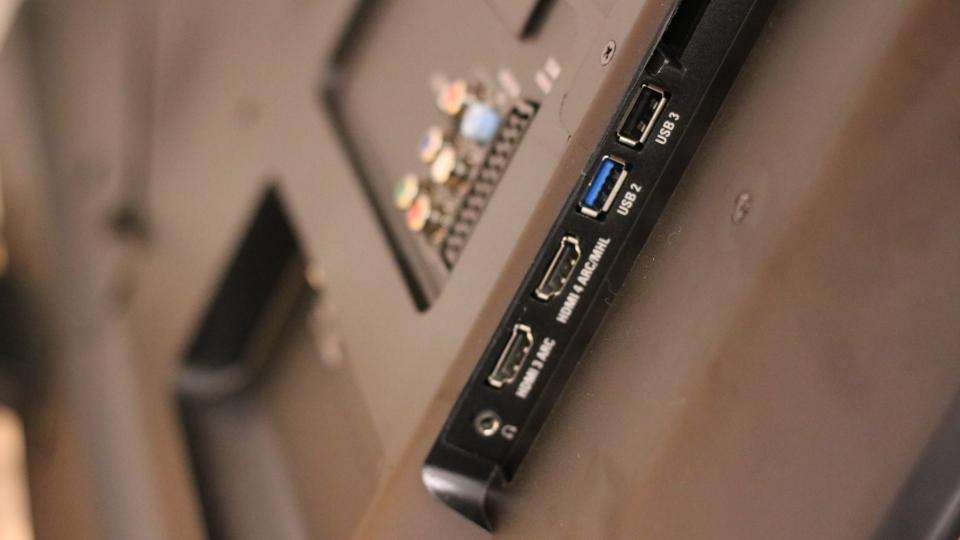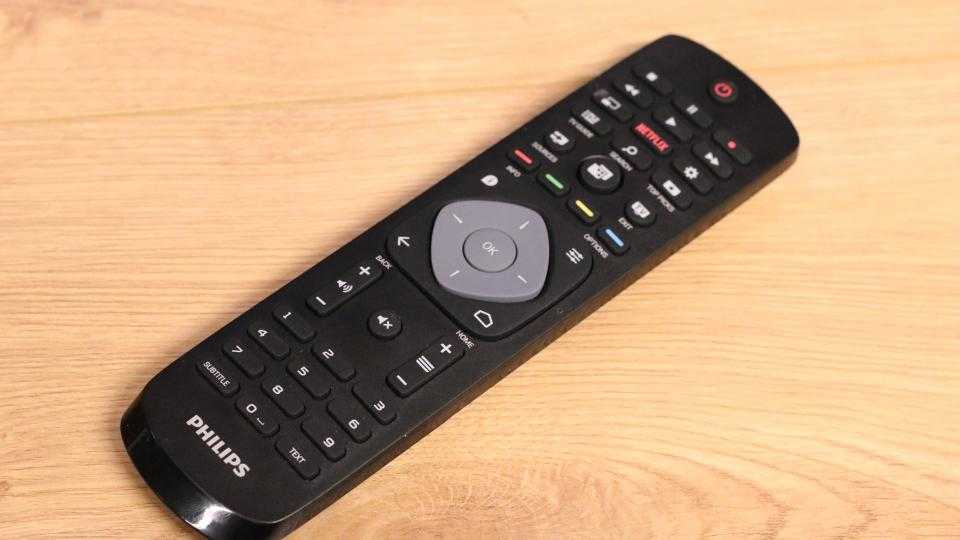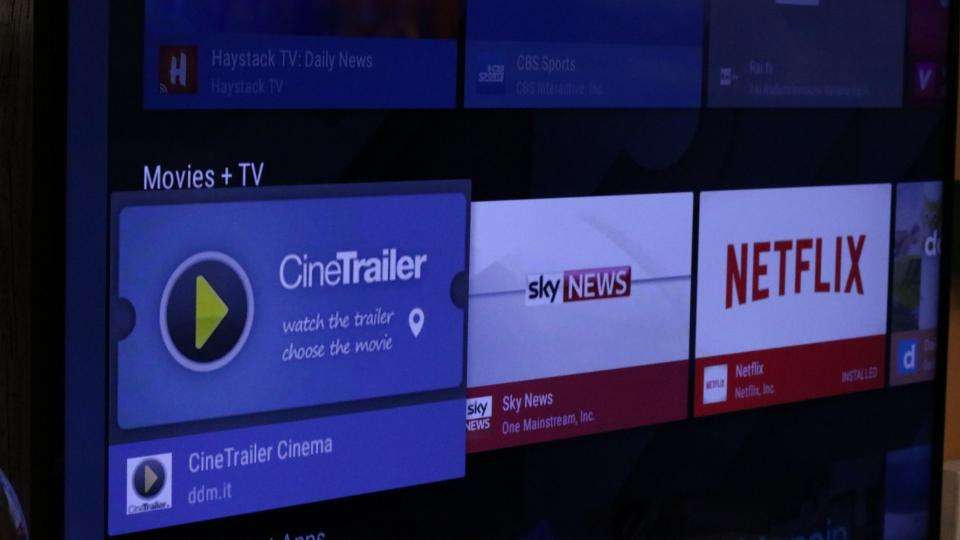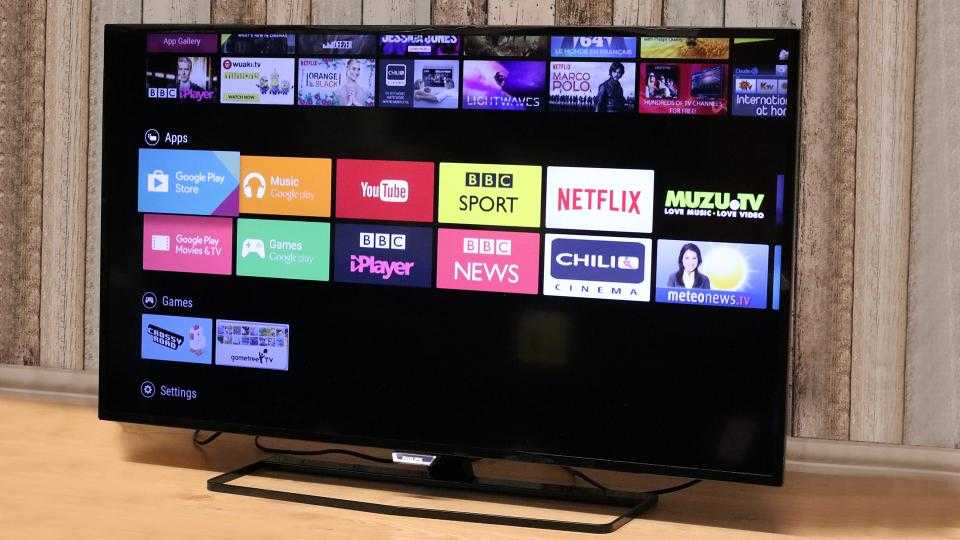The 6400 series is Philips' cheapest set of UHD TVs, with prices on the smallest 40in model bottoming out at £379 during the recent Black Friday sales. There's no better example of how what was a niche, early-adopter product a year ago has quickly become a part of the mainstream.
The 6400 series is fairly subtle in terms of design, with an all-black chassis and a black stand. The only highlight is the illuminated Philips logo just below the bottom bezel. It's not a stunner by any means, but the lack of flair also means it'll fit seamlessly into most living rooms. Around the back there are four HDMI connectors as well as one connector for Component and SCART apiece. Three of the HDMI 2.0 ports are ARC-compatible, so you can connect your TV to an amplifier and have your TV's audio play through your high-end speaker system. There are also three USB ports, one of which is USB3-compatible, so you'll want to use that one when playing UHD content from a flash drive or external hard disk.

Image quality
Image quality is always going to be the biggest concern with a rock-bottom TV, but the 6400's shortfalls gave me serious pause for thought about whether it is actually good value for money. The biggest issue is some fairly hefty dimming in the corners of the screen. While it's not uncommon for cheap direct-LED TVs to have some slightly patchy backlighting, this is one of the worst cases I've seen on a modern set. You can see a noticeable dark spot in each corner that spreads a few centimetres along the edges of the TV. I ran my colour calibrator over these spots, and it revealed that on a pure-white background, the screen was 70cd/m2 darker in the corners than in the centre. From a maximum brightness of around 180cd/m2 in my test, that's a huge drop. That being said, it's unnoticeable when watching anything shot in a different aspect ratio, as the black bars all but hide it completely.
Even if you can get past that, other issues are a cause for concern. None of the eight preset image modes were wholly satisfactory for broadcast HD TV or Full HD Blu-ray content. Even stock 4K footage, which is edited to look as colourful and vibrant as possible and therefore should be a slam-dunk for any UHD TV, was disappointing; subtle shades on brightly-coloured and white objects were lost almost completely.
Getting skin tones to appear natural was very difficult without upsetting the balance of the rest of the image; there are no specific skin tone adjustment options, so you have to play with the various colour settings. This is partly down to the meagre 86% sRGB colour coverage this TV is capable of out of the box. With a smaller set of colours to choose from, some detail is lost.
There's a fair amount of options for tweaking image quality, considering the price of the set, and they go some way to explain why the out-of-box experience is so poor. Various dynamic contrast settings were switched on, messing with contrast levels on a scene-by-scene basis, while another automatic contrast setting was optimised for power efficiency. With these switched off and with a tweak to colour intensity settings I was happier with the overall picture quality, even if it meant changing settings for each new source in order to get things looking their best.
HD content still isn't handled brilliantly, even after tweaking. As a budget TV, there's no complex image processing tech, but I was still disappointed blotchy broadcast TV. Skin blemishes looked detailed and natural, but with any moderate movement the detail was lost and things became blotchy again as the TV tried to smooth out the edges of interlaced HD content.
Blu-Ray content fared better, with great inky blackness showing through when watching Interstellar thanks to a black level of just 0.04cd/m2. For the most part the panel handles judder (caused by the low 24fps of Blu-Ray content) pretty well, with medium and large moving objects doing so very smoothly. However, with smaller focal points, such as space debris or birds, things get extremely juddery, which is distracting when you're engrossed in an intense action scene. I don't think it's a deal breaker, but you will notice it all the same.
You'll need to switch the TV over to Game Mode if you want to play fast-paced games; on its default setting the TV has a high input lag figure of 49ms, which feels lethargic and slow. With game mode, this dropped to around 30ms, which still isn't brilliant but should be fine for most console games.

Performance and Smart TV
The 6400-series runs Android TV, as well as Philips' own bespoke menus. These clash on a fairly regular basis, with Android TV content sitting on top of Philips' own menus more often than I'd like. Android TV expects you to have a microphone for easier text input, but Philips hasn't fitted one to its remote. The UI is slightly confusing and I'm not convinced less experienced users will ever get their heads around it. There are two app stores, for example: one for legacy apps that run on older smart TVs, and the full Google Play Store for Android apps.
With two app stores combined, you'd expect to have plenty of catch-up apps, but sadly that's not the case. Only Netflix and BBC iPlayer make it to the TV, with ITV Hub, All4, Demand 5, BT Sport and Amazon Prime Instant video all missing. Android TV is mostly filled with apps you haven't heard of and games that don't run smoothly enough to be playable, making the whole thing feel a little bit sad and barren. It's not the smoothest or best-designed OS, either. Inputs from the remote take too long to register and the on-screen keyboard is very frustrating to use.

^Lots of apps, not many you'll care about
The TV does at least have Google Cast built in, which goes some way to filling the void. Admittedly, Cast support is fairly well supported among media apps in the UK, and it's a great for easy sending YouTube content to your TV.
The broadcast TV portion of the set is fine; you get a decent EPG, although there's no sign of Freeview Play or any time-shifting features, which leaves it slightly lagging behind the likes of Sony and Panasonic.
Conclusion
It's impressive that Philips has managed to sell a 4K TV range at such a low price, but you have to consider that sacrifices have been made in order to do so. Image quality is middling at best, and the Android TV interface still doesn't feel like it's ready for prime time. If pixel count and price are your top priorities, the 6400 certainly has its place, but anyone that truly values picture quality would do better by spending the same amount of money on a higher quality Full HD TV. In these days of transition between Full HD and UHD that may sound counter-intuitive, but with 4K content still in its infancy, there are still a few years to go before it's even nearly as widespread as Full HD. Right now, Samsung's J6300-series TVs are a better bet. Buy the Philips 40PUT6400 now from Currys
|
HARDWARE |
|
Screen size |
40in |
|
Native resolution |
3,840x2,160 |
|
Aspect ratio |
16:9 |
|
3D |
None |
|
Contrast ratio |
Not stated |
|
Brightness |
300cd/m2 |
|
Speakers |
20W |
|
Video inputs |
4xHDMI, common interface, SCART, component |
|
Audio inputs |
3.5mm |
|
Audio outputs |
Optical S/PDIF |
|
Tuner |
Freeview HD |
|
Streaming TV services |
BBC iPlayer, Netflix, YouTube |
|
Media Streaming |
DLNA |
|
Dimensions |
575x904x213mm |
|
BUYING INFORMATION |
|
Price including VAT |
£379 |
|
Warranty |
Two years RTB |
|
Supplier |
argos.com |
|
Details |
philips.co.uk |
|
Part code |
40PUT6400 |


Leave a Reply